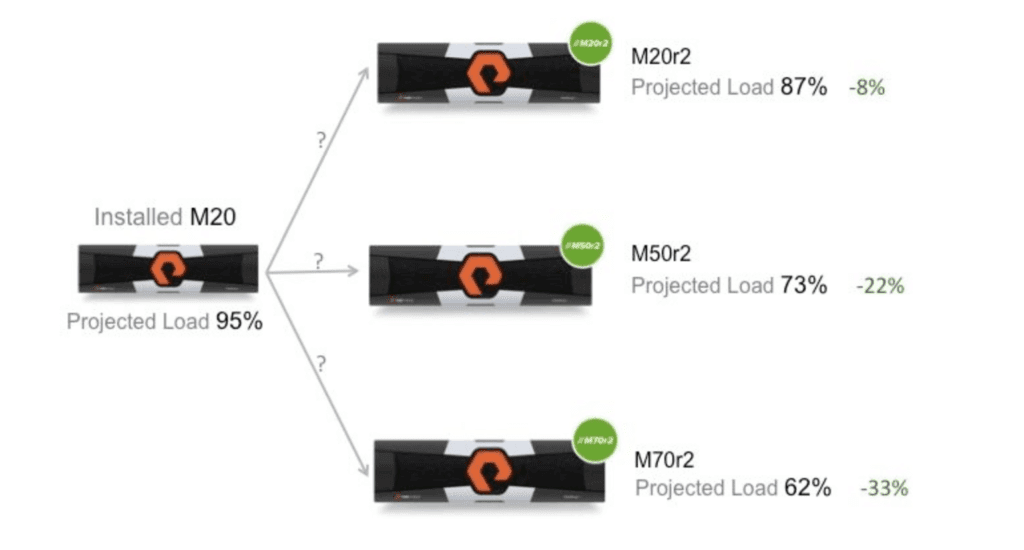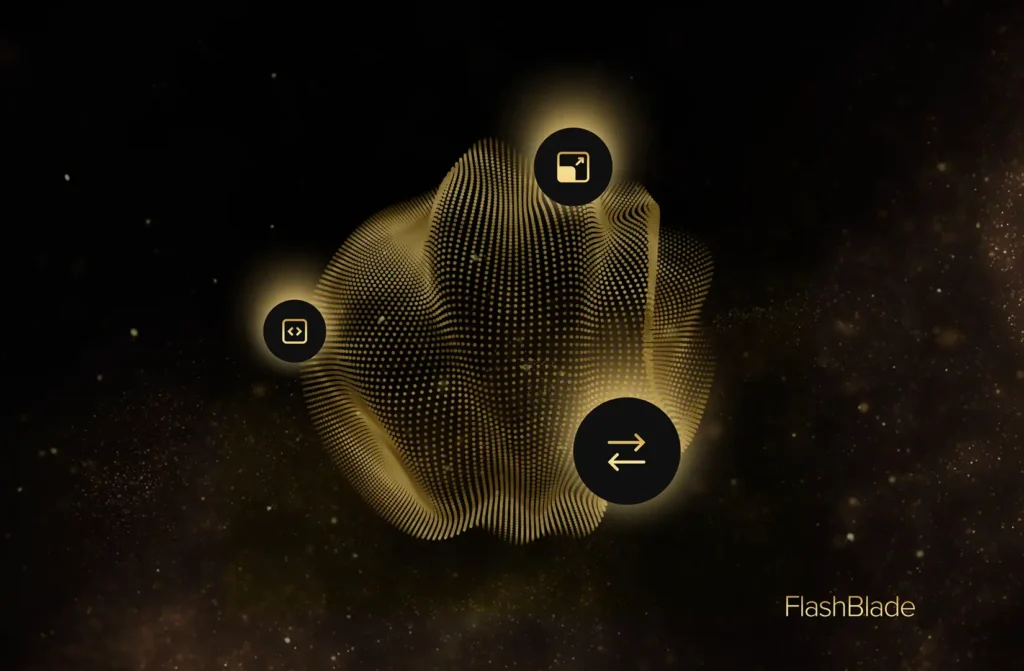TV shows like WestWorld dream of a future ruled by artificial intelligence, but the practical applications of AI to today’s problems are much harder to come by, especially in the world of storage. Historically, few products in the storage industry have been able to effectively utilize this technology until we introduced our machine learning based predictions in Pure1. It was our first foray into using machine learning based models to help you understand your storage better and to help you plan for the future.
Customers loved the simplicity we brought with a single number for load and the ability to peek into the future and see what load and capacity would be like one month, three months or even a year out using the Meta Workload Planner. But even as we were releasing this tool, we were asking ourselves – how can we further use the rich models we’ve built around customer workloads and our FlashArray products to make our customers’ experience better?
We thought about how you, the customer, use the load and capacity predictions that we give you in the Workload Planner. The answer, unsurprisingly, was that you use these predictions to inform decisions about your storage. Decisions like when and how much capacity you should add to your array, when your controller would become fully loaded and when you might need to consider a controller upgrade. But there was no way to simulate what the result of those decisions would be. The decisions were made based on estimations and intelligence from our sales engineers. So we began thinking: what if we could help our partners, sales engineers and customers through this decision making? That question led to the new hardware simulation feature launched today in the Meta Workload Planner.
Take a look at this short demo of the planner in play.
The goal is to help you make informed decisions about hardware changes in your environment based on customer specific workload assumptions. We do this by simulating what your specific workloads would look like in the new config you want to test out. No more looking at data sheets and synthetic runs to match up your workload against – you get to see your workload simulated on the hardware you want. Let’s take a closer look at how this would work.
Suppose you have an array that is projected to hit 95% load in the coming month.
What can you do to ensure plenty of headroom in the future as you grow? With the new hardware simulation feature in the Meta Workload Planner, you can simulate all the possible upgrade options you have along with the projected load for each option. In this case, going to a M20r2 will change my projected load to 87% for the next month which doesn’t give me too much headroom to grow. If you anticipate more growth in the workload running on this box, you can plan for it by upgrading say to an M70r2, which has projected load of 62% and plenty of headroom to grow into.

You can follow a similar analysis for capacity. Say we have an array, which is projected to hit 100% fullness in the next 10 weeks. In the hardware view, you can see a visual representation of the capacity that you currently have installed in my array, as well as potential empty slots (and shelves) that could be added to the system. You can click on any of the available slots and select a data pack size you would like to add, and simulate what happens to the time to 100% fullness.

You can see that adding a 5TB data pack changes the time to 100% fullness from 10 weeks to 4 months, while adding a 20TB data pack gives you over a year until the array will fill up.
It’s that simple.
Behind the scenes, there is a lot that goes into making this a seamless, intuitive experience. We gave you some insight into the machine learning that goes into building the predictive system in our last blog post.
Since then, we’ve worked to make our models better at predicting load. We’ve built systems based on distributed platforms like Apache Spark, which can process a lot more historical data, which in turn helps us learn more about the FlashArray systems across our customer base. We’ve built models for understanding how load changes between different models of FlashArray. We’ve also made significant improvements to the time series analyses that capture the patterns of a customer workload and project it into the future. All these things have culminated in us being able to bring a rich experience to you, our users, with the confidence that the numbers are based on strong machine learning models.
We’re excited about the future of machine learning within Meta and all the value it can bring to your experience.
If you’re a Pure customer try out the new hardware change feature in Pure1Ⓡ.
To learn more, see the resources below or contact Pure Storage.
- Visit the Pure1 webpage
- Watch this Pure1 demo
- Watch this talk I gave on machine learning with Pure1 Meta




